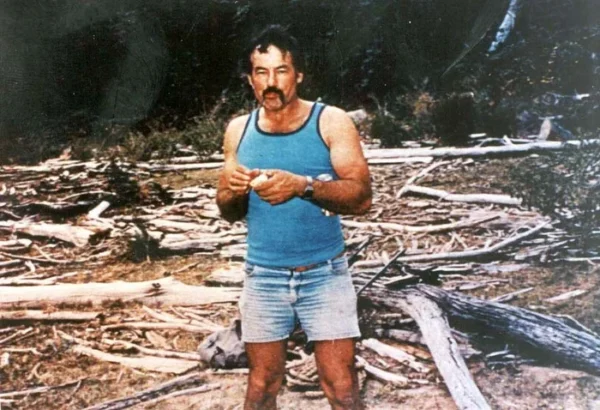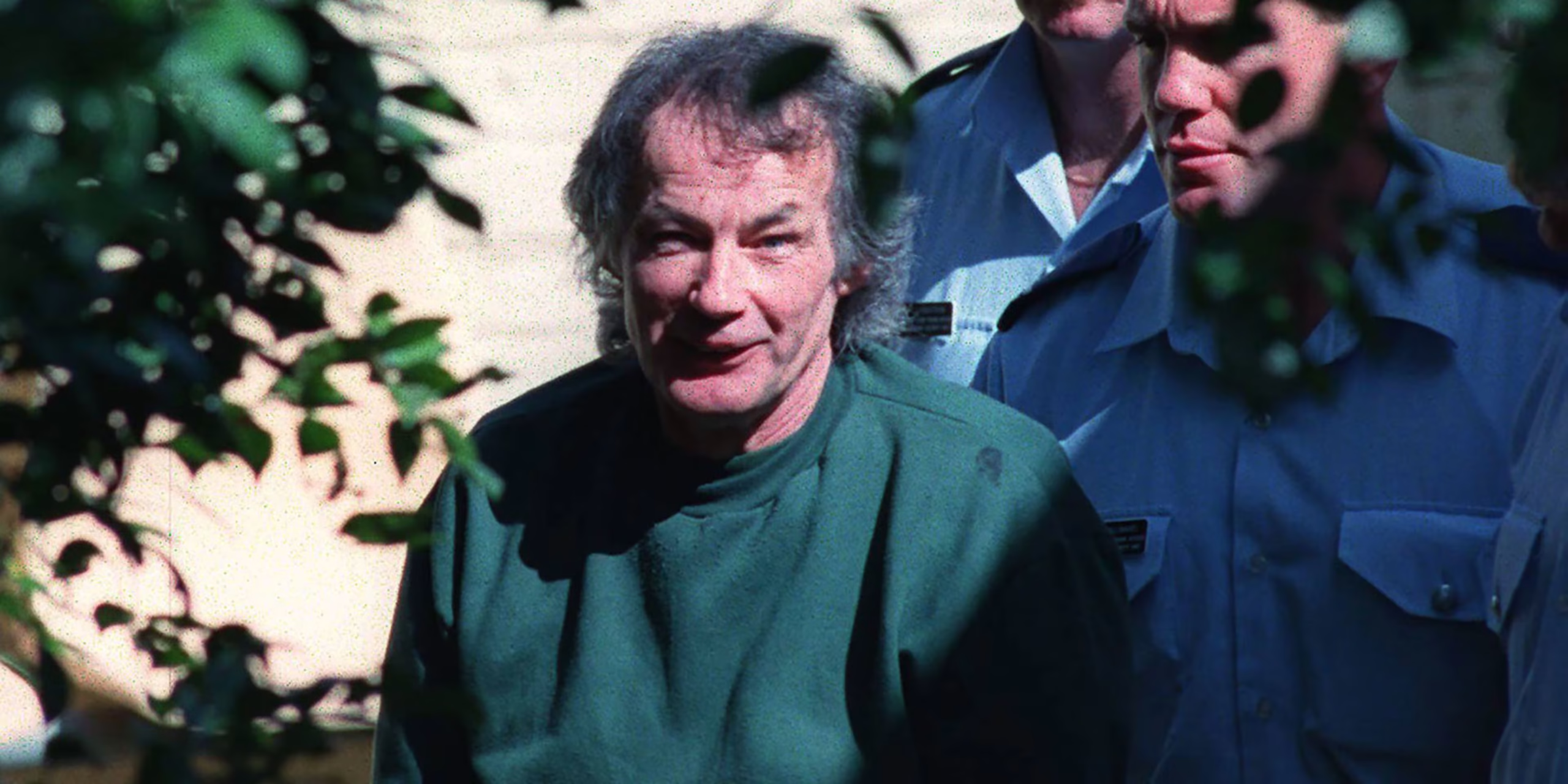Dive deep into the disturbing life of Ivan Milat — Australia’s most infamous serial killer whose charm hid monstrous cruelty.

🌏 When the Australian Dream Turned Dark
Australia — the land of golden horizons, endless highways, and the spirit of freedom. For years, backpackers from across the world came chasing adventure, love, and a sense of belonging. The open road was a promise — until one man turned it into a nightmare.
Between 1989 and 1992, a series of disappearances began to haunt the nation. Young travelers vanished without a trace near Belanglo State Forest, a peaceful stretch of wilderness just south of Sydney. What lay beneath those quiet trees was a horror no one was prepared for — a story written in fear, pain, and silence.
That story belonged to Ivan Milat, a man who looked like anyone’s friendly neighbor but carried within him a darkness that defied comprehension.
👶 The Making of a Monster
Ivan Robert Marko Milat was born in 1944, in the suburbs of Sydney, the fifth of fourteen children in a strict Croatian immigrant family. His father was a laborer — tough, controlling, and often harsh. His mother, though loving, couldn’t protect her children from the violence that brewed in their small home.
By his teenage years, Ivan had already shown signs of rebellion. He was restless, reckless, and coldly detached. He didn’t just disobey — he tested boundaries. At 17, he committed his first serious crime — armed robbery. It earned him time in juvenile detention, where his charm and silence kept him under the radar.
Those who knew him described him as “quiet but unpredictable.” Behind his soft-spoken nature was a calculating mind. Ivan Milat learned early how to pretend normal, a skill that would later help him lure innocent souls into his deadly trap.
🛣️ The Wanderers Who Never Came Home
By the late 1980s, Australia had become a paradise for backpackers. Young travelers — mostly from Europe — explored the country’s vast beauty, often hitchhiking from town to town. It was freedom at its purest.
Then came the disappearances.
In 1989, Deborah Everist and James Gibson, two young Australians, went missing while traveling from Sydney to Albury. Months later, their families still hoped for a miracle. But there would be none.
In 1991, Simone Schmidl, a German traveler, vanished. So did Gabor Neugebauer and Anja Habschied, a loving couple from Germany. Each disappearance was a whisper in the wind — disconnected, mysterious, and terrifyingly similar.
No one yet realized that all the roads led back to one man — and one forest.
🌲 The Belanglo Forest of Secrets
In 1992, two men jogging through Belanglo State Forest made a horrifying discovery — a human skull and bones hidden beneath leaves. Police rushed to the scene, uncovering the remains of two missing backpackers.
But it didn’t end there. Over the next year, six more bodies would be found in the same forest. The victims had been bound, gagged, stabbed, and shot. Some showed signs of prolonged torture — cruelty that spoke of control, not chaos.
The world began to look at the Australian wilderness differently. What was once a place of peace had become a silent graveyard.
🕵️♂️ The Hunt for a Killer
Detectives formed the “Backpacker Murders Task Force.” They connected the dots — the method, the timing, and the geography all pointed toward a single killer.
Then came a break in the case. A British backpacker, Paul Onions, stepped forward. He had survived a terrifying encounter years earlier with a man who offered him a lift near the same area. The man had pulled a gun on him, but Onions escaped. His description of the attacker matched Ivan Milat.
When police raided Milat’s home in 1994, they found chilling evidence — weapons matching the bullets from the forest, ropes, and belongings of the murdered backpackers neatly kept as souvenirs. It was all there — the proof of a monster hiding in plain sight.
⚖️ The Trial of the Century
Ivan Milat’s trial in 1996 became one of the most watched in Australian history. He smiled often, seeming amused as victims’ families broke down in tears. He denied everything, painting himself as the victim of a police setup.
But the evidence was overwhelming. The court found him guilty of seven murders — though investigators suspected there were more. He was sentenced to seven life terms without parole.
Behind bars, Milat never confessed. He staged hunger strikes, cut off his own finger once, and continued to protest his innocence until his final days.
💔 The Lost Voices
The victims of Ivan Milat were more than headlines — they were dreamers who wanted to see the world.
They were young, full of life, and believed in the kindness of strangers.
Their stories remind us of what was stolen — laughter, futures, love, and hope. Families across continents still mourn them, lighting candles every year to remember the children who never came home.
As one grieving mother said, “They went looking for the beauty of the world, and met its darkest face.”
🕯️ The Death of a Monster
In 2019, after more than two decades in prison, Ivan Milat died from cancer. Even as death approached, he refused to reveal the full truth. There were whispers of other victims buried deep in forests that may never be found.
His passing brought mixed emotions — relief for some, sorrow for others. But closure? That’s something the families never truly got.
⚰️ The Legacy That Still Haunts
Belanglo Forest remains a symbol of Australia’s lost innocence — a place where adventure met horror. Signs still warn visitors to stay alert. Locals speak of an eerie stillness, as though the woods themselves remember.
Milat’s story stands beside other chilling tales of human cruelty, like Love, Lies, and the Death House of Sacramento, and the tragic fall of humanity in How Greed Destroyed Love in Sierra Leone. Each story reveals the same truth — evil often begins quietly, hiding behind a smile.
Even now, criminologists around the world study Milat’s mind. www.america112.com has covered several psychological analyses exploring how his narcissism and lack of empathy drove him. What made him feel powerful wasn’t the kill — it was the control, the silence, the fear.
💭 Final Thoughts – When Evil Wears a Friendly Face
Ivan Milat’s story is not just about death; it’s about deception. It’s about how darkness can hide behind an ordinary face, how the most horrific monsters sometimes live unnoticed among us.
He offered a ride. They offered trust. That’s all it took.
And so, Belanglo Forest stands as more than a place — it is a reminder. A whisper that says: even in beauty, there can live unspeakable darkness.


One Reply to “The Love That Died in the Wilderness”